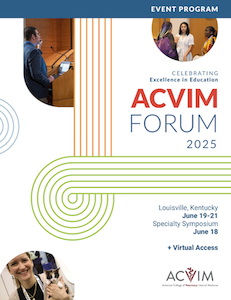Small Animal Internal Medicine
(GI24) Fecal Concentrations of Carbohydrates in Cats with Chronic Enteropathy
Friday, June 20, 2025
4:10 PM - 4:25 PM ET
Location: Exhibit Hall Poster Park - Kiosk 3
- CC
Chih-Chun Chen, DVM (she/her/hers)
Graduate Research Assistant
Texas A&M Gastrointestinal Laboratory
College Station, Texas, United States
Research Abstract - ePoster Presenter(s)
Abstract: Background – Carbohydrates are not considered required nutrients in the diet of cats but provide nutritional value. Previous targeted and untargeted metabolomics studies found that a subset of dogs with chronic enteropathy (CE) had increased fecal concentrations of glucose and other carbohydrates associated with increased abundance of fecal microbial genes related to carbohydrate metabolism. Therefore, we suspected that carbohydrate dysmetabolism may also present in cats with CE. Objective – To describe fecal concentrations of selected carbohydrates in cats with CE and healthy control cats (HC). Animals – Feces from 73 cats with CE and 52 HC. Methods – Retrospective cross-sectional study. Fecal concentrations of glucose, fructose, mannose, galactose, xylose, ribose, arabinose, and rhamnose were measured by an analytically validated GC-MS assay. Fecal microbiota was evaluated by qPCR-based feline dysbiosis index (DI). Results – Fecal carbohydrate profiles differed significantly between HC and cats with CE on multivariant analysis (permutational multivariate analysis of variance (PERMANOVA): P=0.001). Cats with CE showed significantly decreased concentrations of some carbohydrates that are absorbed in the intestine by simple diffusion (rhamnose, xylose, and arabinose) (Mann-Whitney U test, adjusted p-value< 0.001). A subset of cats with CE (9/73; 12%) had glucose concentrations above the 95th percentile observed in HC; of these, 9/9 (100%) had an increased DI (Fisher’s exact test, p=0.049). Conclusions and clinical importance – Altered fecal carbohydrate profiles were observed in a subset of cats with CE in association with intestinal dysbiosis.


